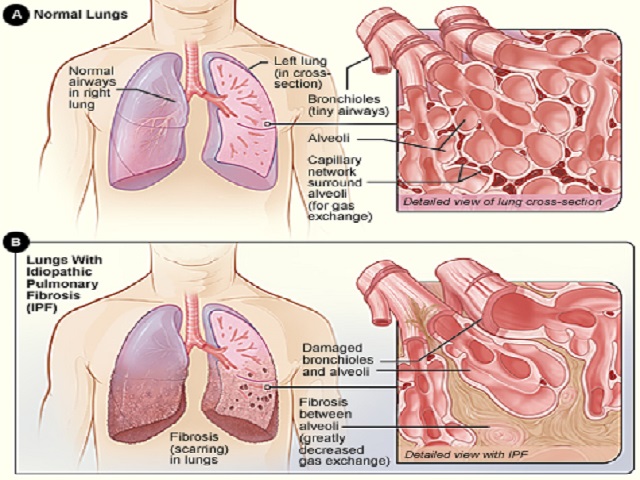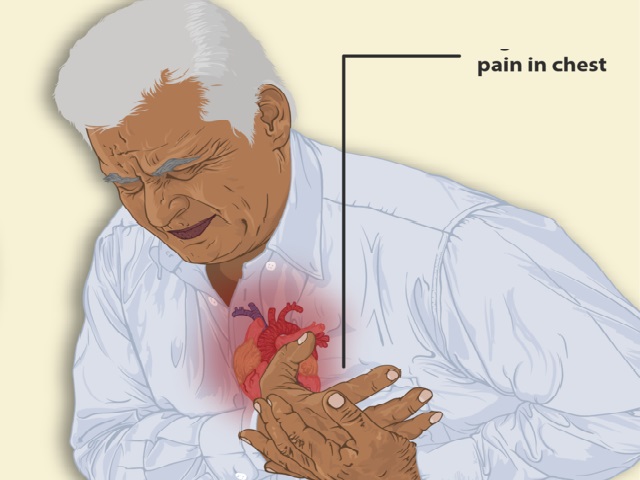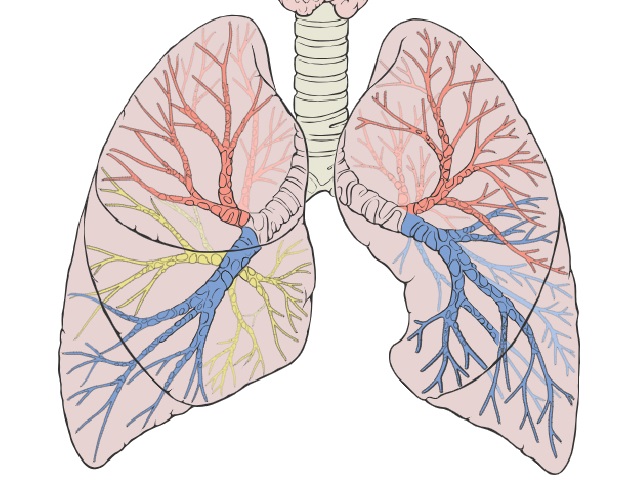5 Signs You May Have Idiopathic Pulmonary Fibrosis -- Symptoms, Causes, Effects, Treatment and Prevention
Image by National Heart Lung and Blood Institute (NIH), Public domain, via Wikimedia Commons
Idiopathic pulmonary fibrosis (IPF) is a chronic and progressive lung disease characterized by the scarring and thickening of the lung tissue. The exact cause of IPF is unknown, and it primarily affects older individuals. Over time, the lung tissue becomes stiff and thick, making it difficult for oxygen to pass into the bloodstream. The scarring is irreversible and can lead to respiratory symptoms and complications.
Symptoms of Idiopathic Pulmonary Fibrosis:
The symptoms of IPF may include:
- Progressive and persistent dry cough
- Shortness of breath, particularly during physical activity
- Fatigue and weakness
- Chest discomfort or pain
- Loss of appetite and unintended weight loss
Diagnosis of Idiopathic Pulmonary Fibrosis:
To diagnose IPF, healthcare professionals may use a combination of the following methods:
- Medical history and physical examination: The doctor will review the patient's medical history and listen to the lungs for abnormal sounds.
- Pulmonary function tests: These tests measure lung capacity and airflow to assess lung function.
- High-resolution computed tomography (HRCT) scan: This imaging test provides detailed images of the lungs to identify patterns of scarring.
- Lung biopsy: In some cases, a small tissue sample from the lung may be taken and examined under a microscope to confirm the diagnosis.
Causes of Idiopathic Pulmonary Fibrosis:
The exact cause of IPF is unknown, and it is referred to as idiopathic because the underlying cause cannot be determined in most cases. However, certain risk factors and potential triggers have been identified, including:
- Age: IPF is more commonly diagnosed in individuals over the age of 50.
- Environmental exposures: Exposure to certain occupational and environmental pollutants, such as asbestos or silica dust, may increase the risk.
- Genetic predisposition: Some genetic factors may play a role in the development of IPF, although the specific genes involved are not fully understood.
Effects of Idiopathic Pulmonary Fibrosis:
IPF can have several effects on an individual's health and well-being, including:
- Progressive decline in lung function
- Reduced exercise tolerance and physical activity limitations
- Increased risk of respiratory infections
- Pulmonary hypertension (high blood pressure in the lungs)
- Respiratory failure and the need for supplemental oxygen therapy
Treatment of Idiopathic Pulmonary Fibrosis:
While there is no cure for IPF, various treatment approaches aim to slow disease progression, manage symptoms, and improve quality of life. Treatment options may include:
- Medications: Certain drugs, such as pirfenidone and nintedanib, may help slow the progression of IPF.
- Oxygen therapy: Supplemental oxygen may be prescribed to improve oxygen levels in the bloodstream.
- Pulmonary rehabilitation: A comprehensive program that includes exercise, breathing techniques, and education to improve lung function and physical well-being.
- Lung transplantation: In advanced cases, lung transplantation may be considered for eligible individuals.
Prevention of Idiopathic Pulmonary Fibrosis:
As the exact cause of IPF is unknown, specific prevention strategies are limited. However, some general measures that may promote lung health include:
- Avoiding exposure to occupational and environmental pollutants
- Quitting smoking and avoiding secondhand smoke
- Seeking early medical evaluation for respiratory symptoms
- Maintaining a healthy lifestyle with regular exercise and a balanced diet
Note: It is essential to consult with a healthcare professional for accurate diagnosis, personalized treatment plans, and guidance on managing idiopathic pulmonary fibrosis.
References:
American Lung Association. (n.d.). Idiopathic Pulmonary Fibrosis (IPF). Retrieved from https://www.lung.org/lung-health-diseases/lung-disease-lookup/idiopathic-pulmonary-fibrosis
National Heart, Lung, and Blood Institute. (n.d.). Idiopathic Pulmonary Fibrosis. Retrieved from https://www.nhlbi.nih.gov/health-topics/idiopathic-pulmonary-fibrosis














